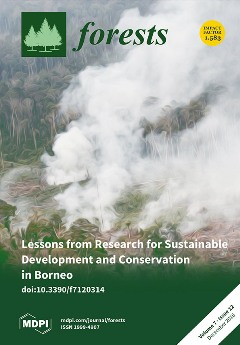Ginkgo biloba L. is one of the most extensively planted and productive commercial species in temperate areas around the world, but slow-growth is the most limiting factor for its utilization. Fertilization is one of the key technologies for high quality and high forest yield. To better understand the impacts of fertilization on
Ginkgo productivity, the effects of fertilization treatments (single fertilizer and combined fertilizer) on growth, nutrient content in
Ginkgo leaves, and photosynthesis characteristics were studied in a 10-year-old
Ginkgo plantation over two years. The single factor experiments suggested that DBH (diameter at breast height), H (height), NSL (length of new shoots), and V (trunk volume) showed significant differences between the different levels of single nitrogen (N) or phosphate (P) fertilizer application. Orthogonal test results showed that the nine treatments all promoted the growth of
Ginkgo, and the formula (N: 400 g·tree
−1, P: 200 g·tree
−1, potassium (K): 90 g·tree
−1) was the most effective. G
s (stomatal conductance) and P
n (net photosynthesis rate) showed significant differences between the different amounts of single N or P fertilizer application, while single K fertilizer only affected P
n. Combined N, P, and K fertilizer had significant promoting effects on C
i (intercellular CO
2 concentration), G
s and P
n. N and P contents in
Ginkgo leaves showed significant differences between the different amounts of a single N fertilizer application. A single P fertilizer only improved foliar P contents in
Ginkgo leaves. A single K fertilizer application improved N and K content in
Ginkgo leaves. The effects of different N, P, and K fertilizer treatments on the nutrient content of
Ginkgo leaves were different.
Full article





